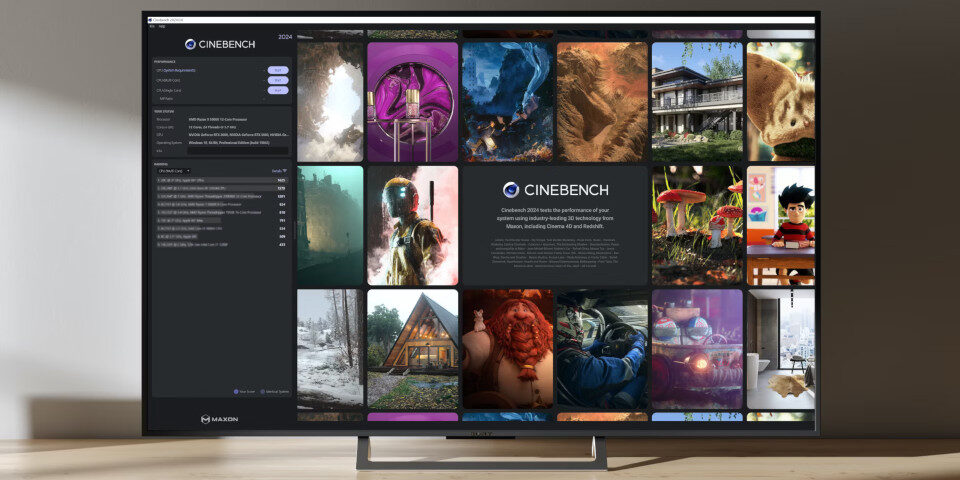Maxon releases Cinebench 2024

Maxon has released Cinebench 2024, the latest version of its CG benchmarking software.
It’s a significant update, reinstating GPU benchmarking, with the new Redshift-based benchmark making it possible to test systems with AMD, Apple and Nvidia GPUs.
A staple tool for graphics hardware reviewers
For over a decade, Cinebench has been a standard tool in benchmarking graphics hardware, both for individual users looking to test their systems, and for studios.
Even CG Channel’s own hardware reviewer, Jason Lewis – not generally a fan of synthetic benchmarks – uses it in his reviews of workstations and graphics cards.
Now a unified CPU and GPU benchmark, compatible with a wide range of processors
Previous versions of Cinebench were based on the Standard renderer in Cinema 4D, Maxon’s 3D modeling and motion graphics software, from which Cinebench is derived.
In Cinebench 2024, that changes to Redshift, the production renderer that Maxon acquired in 2019, and which is now its preferred render engine in Cinema 4D.
Since Redshift was originally developed as a GPU renderer, the update reinstates GPU benchmarking, Maxon having removed the previous GPU benchmark in 2019.
It supports all major makes of GPU used in production, with the exception of Intel’s new Arc A-Series cards: on Windows, AMD and NVIDIA, and on macOS, AMD and Apple.
And since Redshift is also now a CPU renderer, Cinebench 2024 can use a single unified scene for both CPU and GPU benchmarking.
The benchmark supports both the x86/64 architecture used by AMD and Intel CPUs on Windows, and the ARM64 architecture used by Apple Silicon processors on macOS and Snapdragon processors on Windows.
More representative of real-world production assets
Cinebench 2024 also represents a significant increase in the complexity of the benchmark scene, better representing assets currently used in production.
The memory footprint is up 3x – the minum requirement is now 16 GB, although the scene actually uses 6.5-8.5 GB RAM – and computational effort by around 6x.
The switch to Redshift should also make Cinebench more representative of a wider range of pipelines, the renderer – also available for 3ds Max, Blender, Houdini and Maya – being used for animation and VFX, as well as motion graphics and visualization.
But benchmark scores can’t be compared to previous versions of Cinebench
Not suprisingly, given the change of render engine and test scene, and other changes to the code and compiler used, the update is compatibility-breaking.
According to Maxon, Cinebench 2024 score values have been “readjusted to a new range” and should not be compared to scores from previous versions.
Price and system requirements
Cinebench 2024 is available free for Windows 10+ and macOS 11.7.7+. It runs on both AMD and Intel GPUs, and on AMD, Apple and NVIDIA GPUs.
Read more about the new features in Cinebench 2024
See a full list of CPUs and GPUs supported by Cinebench 2024
Download free CG benchmarking tool Cinebench
Have your say on this story by following CG Channel on Facebook, Instagram and X (formerly Twitter). As well as being able to comment on stories, followers of our social media accounts can see videos we don’t post on the site itself, including making-ofs for the latest VFX movies, animations, games cinematics and motion graphics projects.
